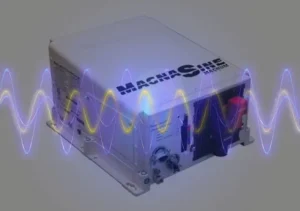When you need reliable, high-quality power for sensitive electronics and appliances, a pure sine wave inverter is the best choice. In this guide, we’ll explore what it is, how it works, its advantages, and how to choose the right one for your needs.
What is a Pure Sine Wave Inverter?
A pure sine wave inverter converts direct current (DC) from a battery or solar panel into alternating current (AC) that closely matches the smooth, clean waveforms provided by the utility grid. This ensures compatibility with all AC devices and prevents damage to sensitive equipment.
Pure Sine Wave vs. Modified Sine Wave Inverter
| Feature | Pure Sine Wave Inverter | Modified Sine Wave Inverter |
|---|---|---|
| Output waveform | Smooth, continuous wave | Blocky, stepped waveform |
| Appliance compatibility | Works with all devices | Limited compatibility |
| Efficiency | Higher | Lower |
| Price | More expensive | More affordable |
Key Advantages of Pure Sine Wave Inverters
- Device Safety: Ideal for sensitive electronics like laptops, medical devices, and modern appliances.
- Energy Efficiency: Minimizes power loss and improves system performance.
- Reduced Noise: Motors and fans run quieter and cooler.
- Longer Equipment Lifespan: Clean output helps protect and extend the life of connected devices.
Applications of Pure Sine Wave Inverters
Pure sine wave inverters are commonly used in:
- Home solar power systems
- RVs and boats
- Emergency backup systems
- Off-grid cabins
- Industrial and medical equipment
How to Choose the Right Pure Sine Wave Inverter
When selecting an inverter, consider the following:
- Power Rating: Ensure it matches or exceeds the total wattage of your devices.
- Input Voltage: 12V, 24V, or 48V based on your battery bank.
- Continuous vs. Peak Power: Continuous is the regular load; peak handles startup surges.
- Features: Look for LCD displays, multiple outlets, USB ports, and safety protections (overload, overvoltage, short circuit).
FAQ
Can I run a refrigerator on a pure sine wave inverter?
Yes. Refrigerators, especially modern ones with digital components, work better and more efficiently on a pure sine wave inverter.
Are pure sine wave inverters worth the higher cost?
Absolutely. If you plan to power sensitive electronics or want to protect your investment in appliances, the higher initial cost pays off in reliability and performance.
How long will a battery last with a pure sine wave inverter?
Battery life depends on the inverter’s load (wattage) and the battery capacity (amp-hours). As a rough estimate, a 100Ah battery running a 100W load could last around 10 hours.
Conclusion
Choosing a pure sine wave inverter ensures stable, safe, and efficient power for a wide range of applications. Whether for home backup, off-grid living, or mobile use, investing in a quality inverter is a smart decision for anyone serious about reliable electricity.




